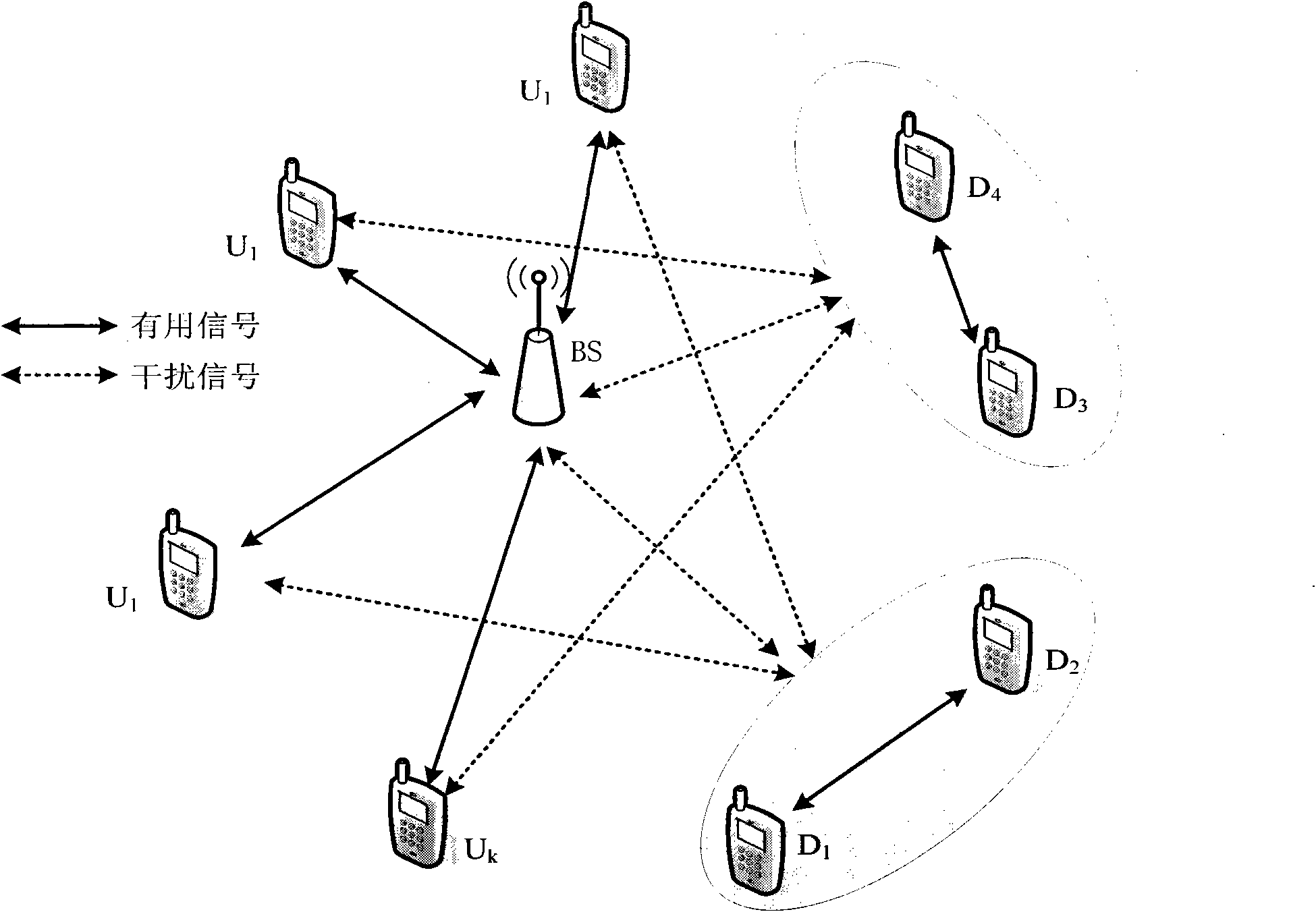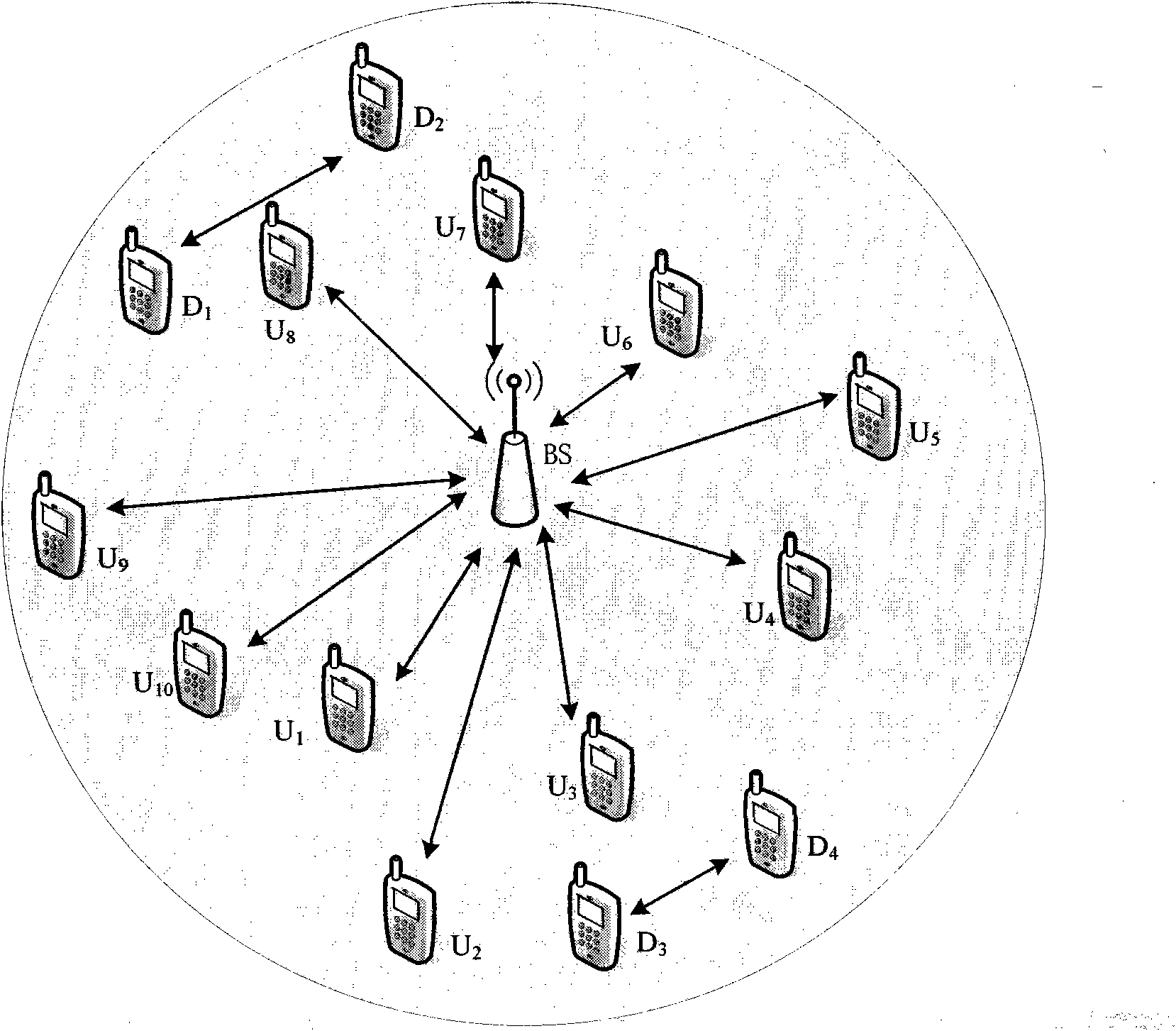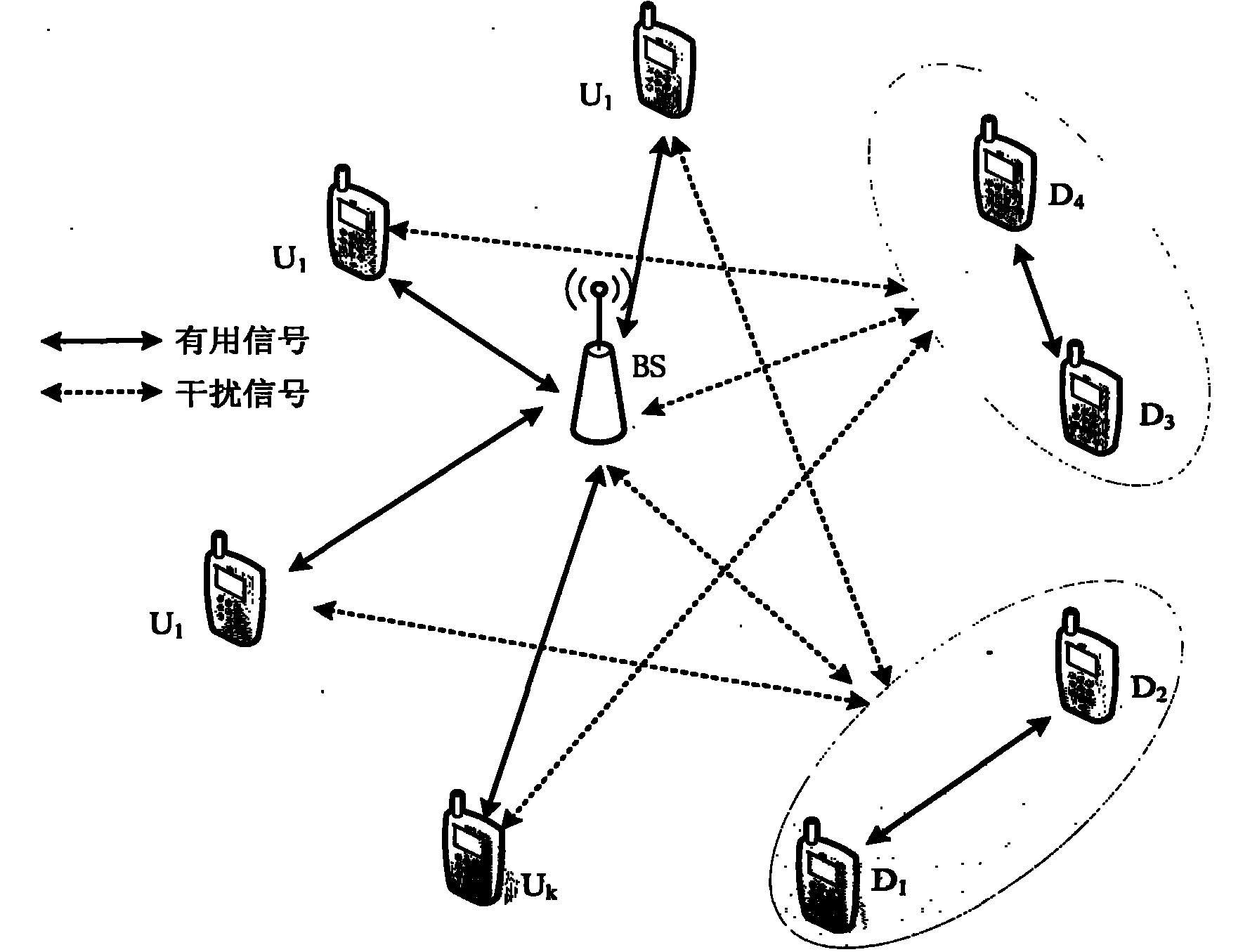User position list-based method for selectively multiplexing multiple honeycomb user resources for device to device (D2D) user pairs
A technology for cellular users and users, applied in network traffic/resource management, electrical components, wireless communication, etc., can solve problems such as interference at the receiving end of cellular links, reduce complexity, reduce interference, and improve overall data rate and spectrum efficiency effect
- Summary
- Abstract
- Description
- Claims
- Application Information
AI Technical Summary
Problems solved by technology
Method used
Image
Examples
Embodiment Construction
[0021] For ease of understanding, the present invention takes a D2D communication network under the LTE-A system as an example to illustrate that D2D technology is applied to a cellular network, and the base station determines the cellular network users who share resources for D2D user pairs through a positioning method. Suppose the system has a bandwidth of 10MHz and works at 2GHz. Suppose there are 10 cellular users in the system, U 1 , U 2 ,...,U 10 ; There are two pairs of D2D users, (D 1 ,D 2 ) and (D 3 ,D 4 ). Here, the number of cellular users and the number of D2D user pairs may be different. The present invention is generally applicable to all network structure models having the basic features in this example. These D2D users can directly communicate under the coordination of the base station, and the D2D user pairs share network resources with the macro cell communication during communication.
[0022] The specific process of determining the resource sharing...
PUM
 Login to View More
Login to View More Abstract
Description
Claims
Application Information
 Login to View More
Login to View More - R&D
- Intellectual Property
- Life Sciences
- Materials
- Tech Scout
- Unparalleled Data Quality
- Higher Quality Content
- 60% Fewer Hallucinations
Browse by: Latest US Patents, China's latest patents, Technical Efficacy Thesaurus, Application Domain, Technology Topic, Popular Technical Reports.
© 2025 PatSnap. All rights reserved.Legal|Privacy policy|Modern Slavery Act Transparency Statement|Sitemap|About US| Contact US: help@patsnap.com



